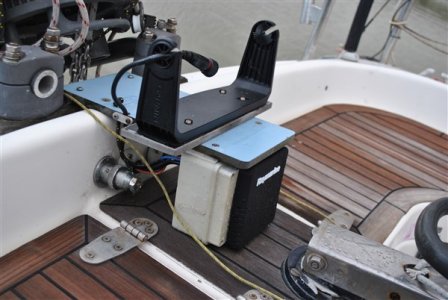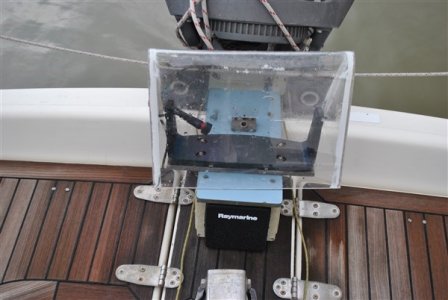Daydream believer
Well-known member
If you cannot reach the controls from the helm, that can be dangerous in, say, a collision situation. Plus it does seem a silly situation to have anyway. One might ask where the chart plotter is ( assuming you have one).Scratching head.... Might it be possible to have the autohelm fitted to a seperate short tiller that is loose until you lock it? Maybe with a friction clutch or pin arrangement. So you turn it on, let it settle, then lock it.
I solved both problems by placing the chart plotter & autopilot control imediately behind the rudder stock. There it can be reached on either tack. I can see the small details on the chart plotter & adjust it frequently. This is important for me as I have ais overlaid on it & need to zoom on a target.
In these pictures I do not have the chart plotter fitted but one can see the holder. I have a hood that I made to protect from rain or spray. If aboard overnight I can leave it under the cover. It can be swivelled a few degrees either way for convenience.
The autopilot control is underneath it. You can see the autopilot plug underneath where it is protected from spray. The unit is cut into the lid of a waterproof electric box obtainable from most electric wholesalers. That means that the connections for the chart plotter ,AIS & autopilot can be kept dry inside as well
The Aries is behind. One can just see the rudder stock in the picture.
I showed the idea to a friend who likes to board his boat over the stern. he also has a locker across the back. His solution was to fix the set BELOW the riller to the face of the locker lid. He can look down on the chart plotter & still reach the controls under the tiller. Having the tiller on top does provide a small degree of protection.
However I have my gimballed grid steering compass under the tiller where I can look down on the card


Last edited:

